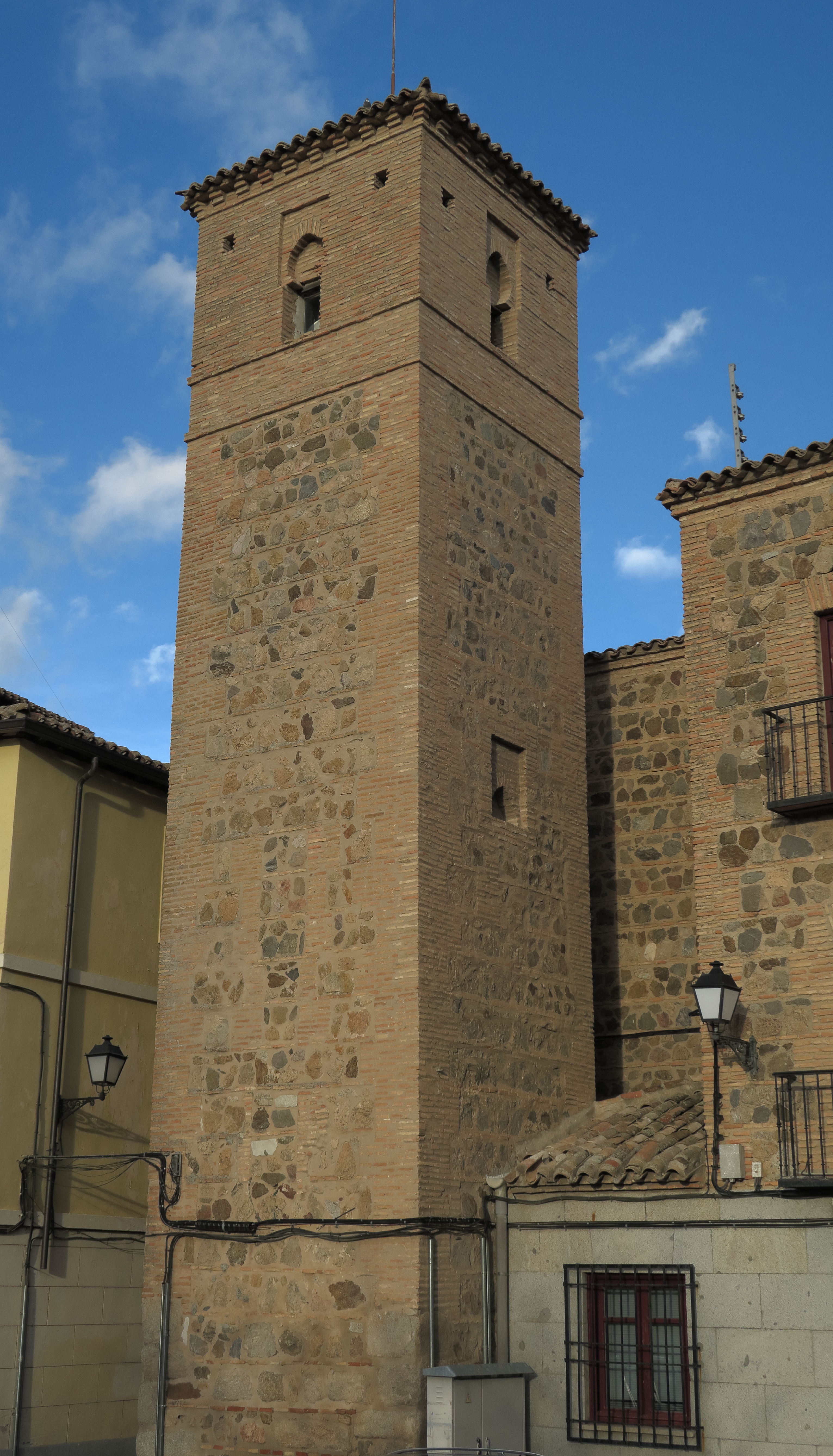Tower of San Cristóbal on:
[Wikipedia]
[Google]
[Amazon]
 The Tower of San Cristóbal is a
The Tower of San Cristóbal is a
Mudéjar
Mudéjar ( , also , , ca, mudèjar , ; from ar, مدجن, mudajjan, subjugated; tamed; domesticated) refers to the group of Muslims who remained in Iberia in the late medieval period despite the Christian reconquest. It is also a term for ...
tower belonging to the Church of San Cristóbal in Toledo
Toledo most commonly refers to:
* Toledo, Spain, a city in Spain
* Province of Toledo, Spain
* Toledo, Ohio, a city in the United States
Toledo may also refer to:
Places Belize
* Toledo District
* Toledo Settlement
Bolivia
* Toledo, Orur ...
(Spain
, image_flag = Bandera de España.svg
, image_coat = Escudo de España (mazonado).svg
, national_motto = ''Plus ultra'' (Latin)(English: "Further Beyond")
, national_anthem = (English: "Royal March")
, i ...
).
History
The missing church seemed to be associated with a mosque founded by Fathibn Ibrahim al'Umawi', known as al-Qasari (934 - 1013). Evidence indicates the existence of a church at San Cristóbal as of1187. In the 15th century, transformations were made to adapt it to the Greco-Roman style. In 1842 the parochiality was knocked down, while the building was broken up and sold to individuals who later destroyed the pieces. In 1845 the demolition of the church proceeded, in view of its ruinous state. The only remnant was the tower built on the foundations of an earlier minaret. The tower was rebuilt between the second half of the 12th century and the first half of the 13th century, when it was linked to the first phase of Toledan Mudéjar.The death of tower
The tower is of square plan with a central machon, around which revolved the stairs. It is made of taped masonry which, at the base, before its restoration, had the appearance ofashlar
Ashlar () is finely dressed (cut, worked) stone, either an individual stone that has been worked until squared, or a structure built from such stones. Ashlar is the finest stone masonry unit, generally rectangular cuboid, mentioned by Vitruv ...
. To these first strings corresponded chains of stone, while in the rest of the tower these are of brick. One wall reused a Visigothic
The Visigoths (; la, Visigothi, Wisigothi, Vesi, Visi, Wesi, Wisi) were an early Germanic people who, along with the Ostrogoths, constituted the two major political entities of the Goths within the Roman Empire in late antiquity, or what is kno ...
piece.
The organization of the spans is in a pointed horseshoe arch, framed in a slight protrusion by a side arranged in the manner of an alphabet. Such an organization has evident Almohad links, which is further supported by its presence in the church of San Cipriano in Toledo. Despite this, it is an unusual model in the Toledan Mudéjar.
Sources
References
{{coord , 39.8555 , N , 4.0274 , W , source:wikidata , display=title Bien de Interés Cultural landmarks in the Province of Toledo Buildings and structures in Toledo, Spain Towers in Spain Towers completed in the 12th century Former mosques in Spain